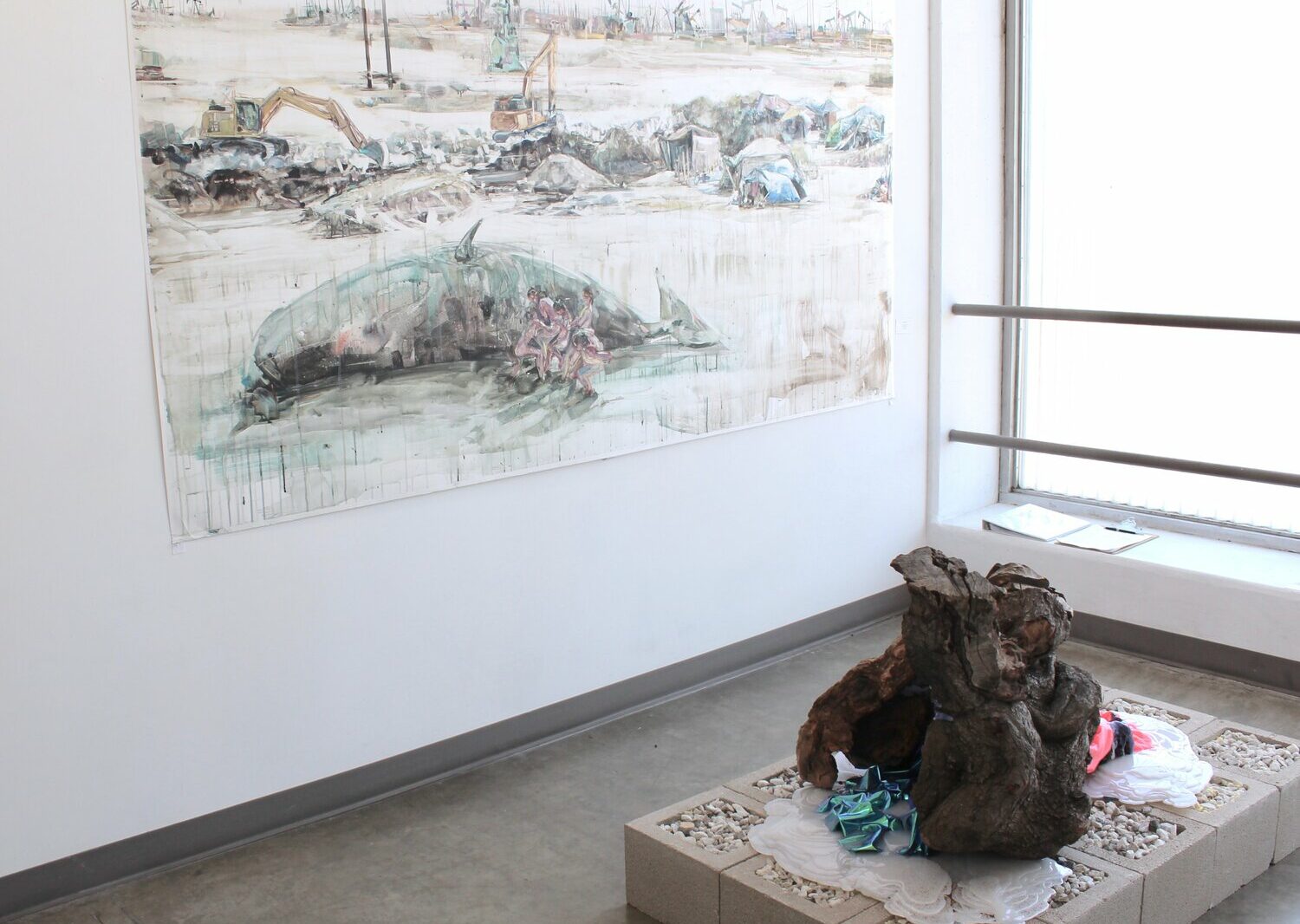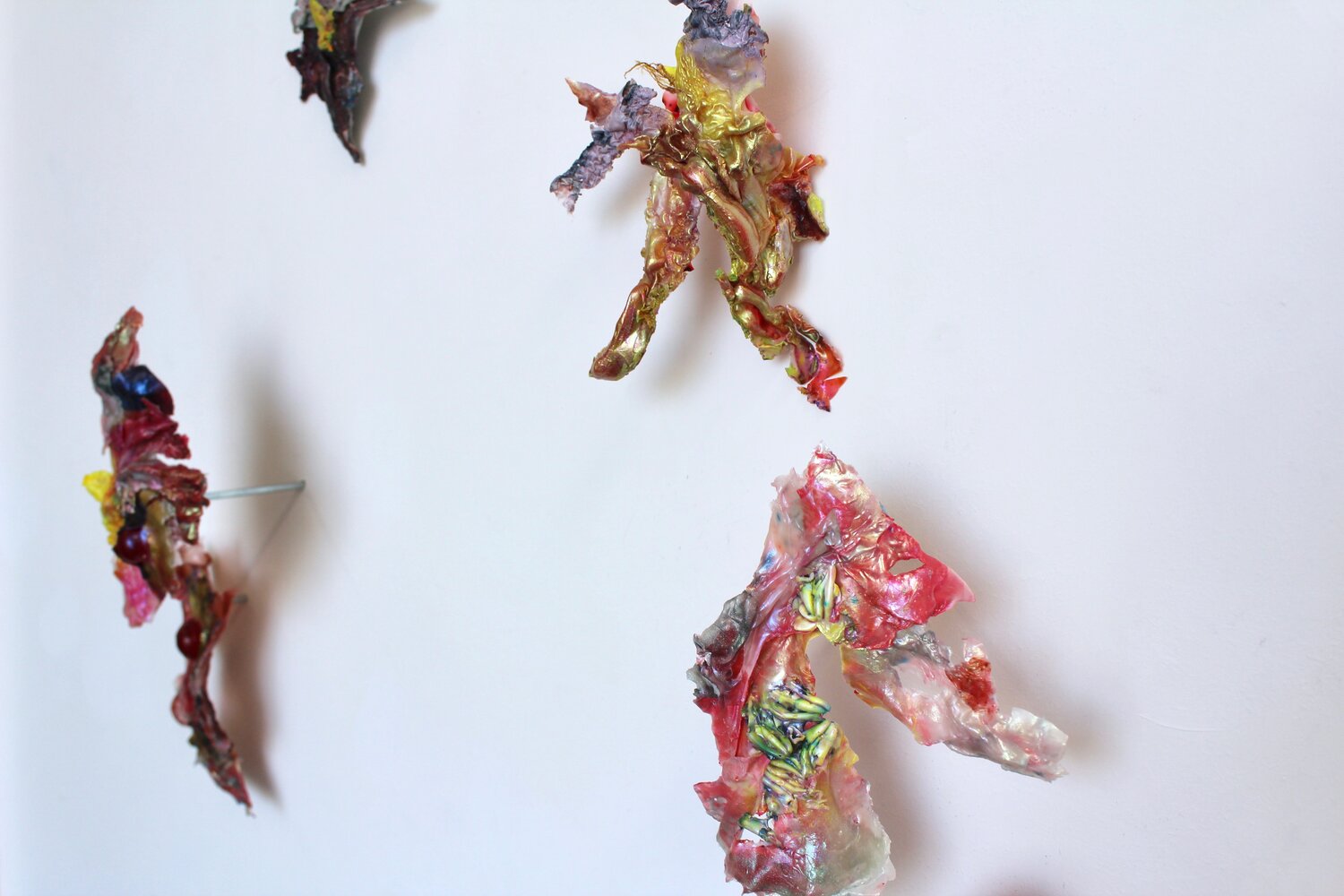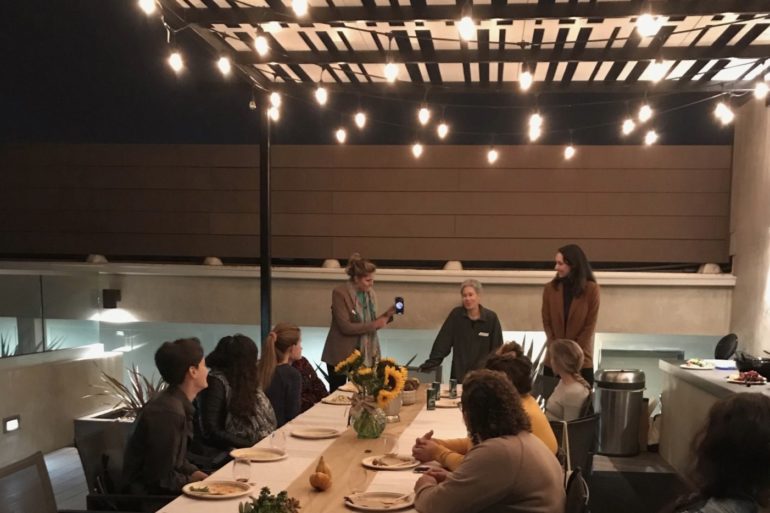Featured Artists: Kim Kei, Maria Agureeva, Molly Segal, Jody Zellen, & Bones Gilmore.
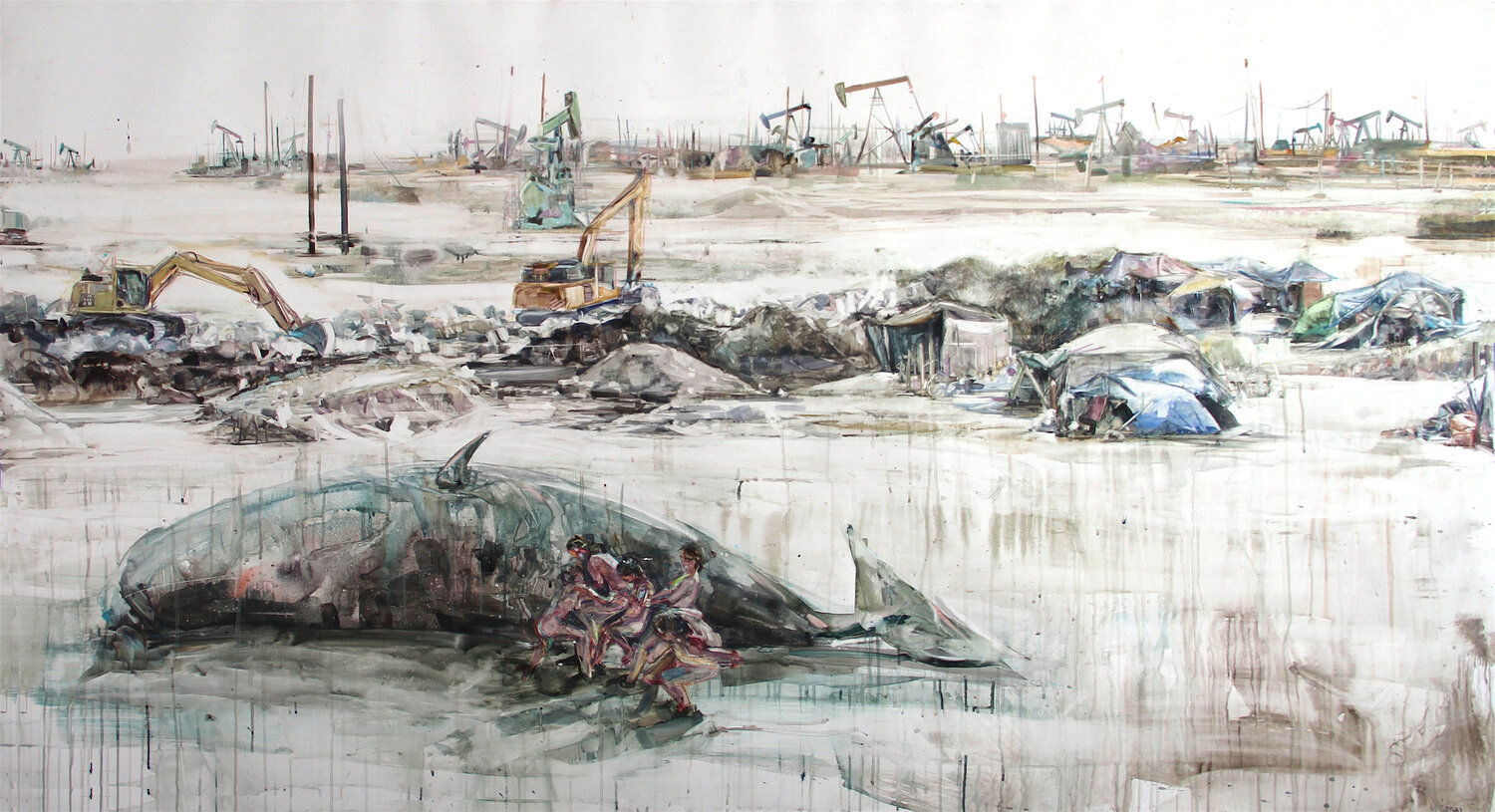
Along the gallery wall, a large painting by Molly Segal depicts a beached whale placed in front of a field of oil rigs in the barren outdoors. In the foreground are naked and preoccupied humans possibly having sex.
“I think we’re definitely both interested in what is able to survive,” Segal, co-curator of the exhibition says of her work and the translucent sculptures of Kim Kei titled, “Degenerative, Degrade and Fill.”
Segal focuses “on the idea of finite resources, environmentally, emotionally, and physically,” she explains. “What are the costs and limits of intimate closeness? What happens when our boundaries and borders begin to blur and bleed? Oil fields, orgies, cockroaches, and homeless encampments serve as reminders of our cyclical interdependence and the cost of survival.”
Along an adjacent wall of the gallery, two landscapes depict displaced, moonlike shapes; artist Bones Gilmore’s black-and-white drawings of a barn fence surrounded by dark woods tug on the fringes of perception to elicit an uncanny solitude.
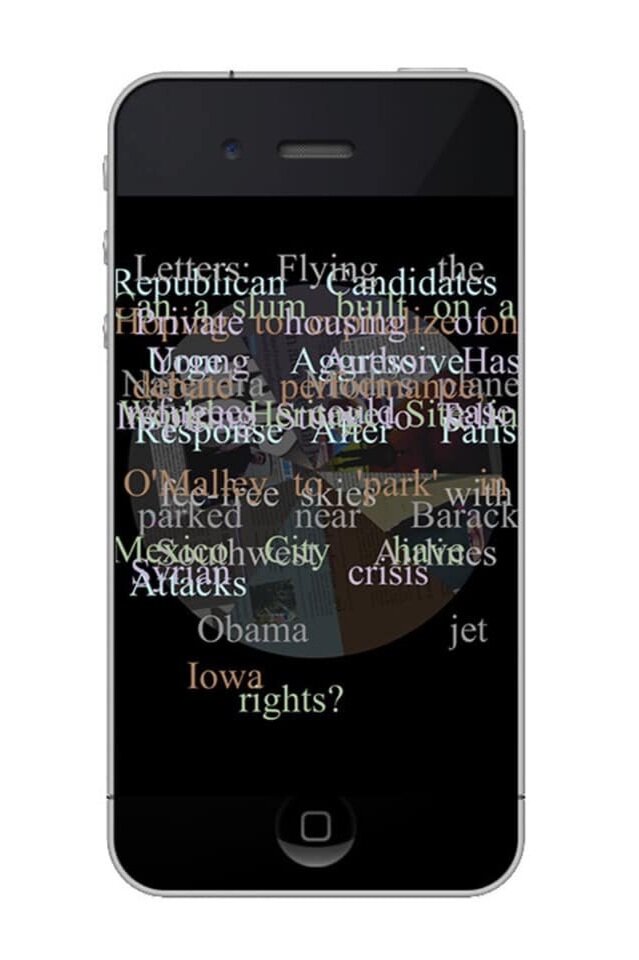
Next to these are eight lenticular prints by Jody Zellen, shaped as circular collages with colorful newspaper clippings and layered word art. Cycles, much like election cycles, do not always hold; Zellen’s series speaks to news communications as confusing and cyclical. Are we to pick through the detritus of fake and real information, seeking a false semblance of truth’s capability on the dark web and mainstream sources? Towards what end?
One image of Zellen’s presents the headline, “The election has unleashed the hate.” Another image states, “Pope compares fake news consumption to eating faeces.” These words are separated from one another, like Ezra Pound’s imagistic poetry, with long spaces, set against a pinwheel collage of newspaper clippings and photojournalism of infographics, landscapes, and burning fires.
Here is an example of truth’s impotence in popular media today: does it matter if allegations about the president are true, if this truth is easily re-molded, carved out as we speak, into a defense of the president in targeted online campaigns (the falsely accused, the innocent scapegoat), thereby consolidating his electoral base to reelect in 2020?
Kim Kei’s sculptures appear as translucent skin fragments mounted on the gallery walls like various glues, bubbling as neon and living creatures, fecund with possibility and also a willful disregard for evolution. Echoing these half-creatures is a large central sculpture by Maria Agureeva, of glittering, hardened residue wrapped around a tree branch, incorporating garbage with the pop colors of fast-food wrappers. In Agureeva’s work, the garbage appears to overtake nature.
Evolving as both the hunter and hunted, we manage to survive via transforming, adapting, and denaturing—while truth falls on its sword. What is deprioritized (honesty, collaboration, teamwork) in this process of desperation takes on a life of its own. Without question, we won’t admit to ourselves that our basic needs have taken us for an effervescent ride, imbibing us. We choose not to examine our desires too closely.
Writings: Janna Avner, ed. Richelle Gribble | Photo Credit (below): Richelle Gribble


